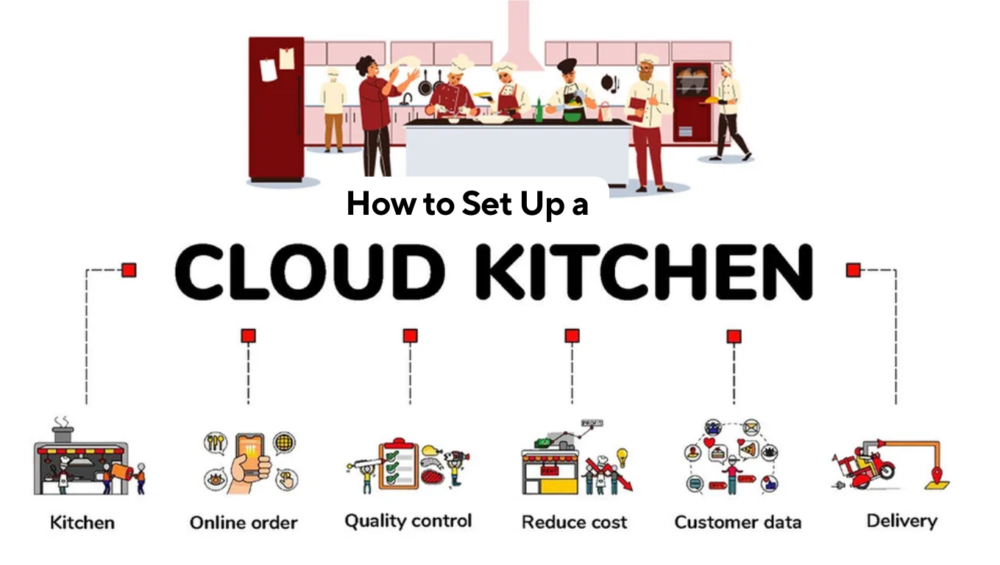The Qatar food sector is booming, with the rise of online food delivery services creating new opportunities for restaurant businesses. One of the most cost-effective models for entering the market is by setting up a cloud kitchen—a delivery-only restaurant that operates without a dine-in facility. If you’re planning to start a cloud kitchen in Qatar, a well-structured kitchen layout is essential for efficiency, hygiene, and compliance with Qatar’s food safety regulations. In this guide, we’ll cover the best design for kitchen layout in Qatar, key equipment, licensing requirements, and how to optimize your operations for profitability.
Why Invest in a Cloud Kitchen in Qatar?
1. Rising Demand for Online Food Delivery
With a growing expat population and digital transformation, online food delivery platforms like Talabat, Carriage, and Snoonu have seen significant growth. A cloud kitchen allows you to leverage this demand with lower overhead costs compared to a traditional restaurant.
2. Cost-Efficient Business Model
Unlike traditional restaurants, cloud kitchens do not require prime real estate locations or a large front-of-house staff, reducing operational expenses. Instead, the focus is on efficient kitchen design, fast order processing, and seamless logistics.
3. Easier Expansion & Scalability
A cloud kitchen enables businesses to test new cuisines and delivery models with minimal investment. Multi-brand cloud kitchens can run multiple virtual restaurant concepts from a single space, maximizing revenue potential.
Design for Kitchen Layout in Qatar: Essential Factors
A well-designed kitchen layout is critical for workflow optimization, safety, and food quality. Here’s what you need to consider:
1. Space Optimization & Zoning
A cloud kitchen layout should be designed with clear zoning for different processes:
✔ Storage Area – Dry storage, refrigeration, and freezers.
✔ Food Prep Stations – Dedicated sections for cutting, mixing, and assembling dishes.
✔ Cooking Area – Equipped with ovens, stoves, fryers, and grills.
✔ Packing & Dispatch Area – Separate space for order assembly and packaging.
💡 Tip: Use modular kitchen designs to maximize space and allow easy scalability.
2. Compliance with Qatar’s Food Safety Regulations
The Ministry of Public Health (MOPH) in Qatar mandates strict hygiene and food safety regulations. Your kitchen layout must include:
- Proper ventilation & exhaust systems
- Anti-slip flooring & easy-to-clean surfaces
- Dedicated washing stations for utensils & hands
- Separate areas for raw and cooked food to avoid contamination
For official guidelines, refer to the Qatar Ministry of Public Health website.
3. Equipment & Technology Integration
Invest in high-quality commercial kitchen equipment to enhance productivity. Essential appliances include:
- Combi ovens & grills for versatile cooking
- Blast chillers to preserve food freshness
- Smart POS systems for order tracking
- Automated inventory management tools
For the best kitchen equipment in Qatar, check out Al Rawaa Al Ibdaa.
How to Set Up a Cloud Kitchen in Qatar: Step-by-Step Guide
Step 1: Choose the Right Location
Even though cloud kitchens don’t require premium locations, you should consider factors such as:
✔ High-demand areas with a strong customer base
✔ Proximity to delivery hubs for faster service
✔ Affordable rent with adequate kitchen space
Interlinking: Check our commercial kitchen space for rent in Qatar for ideal cloud kitchen locations.
Step 2: Get Business Licensing & Permits
To legally operate a cloud kitchen in Qatar, you need:
- Trade License from the Ministry of Commerce and Industry (MOCI)
- Food License from MOPH
- Commercial Kitchen Approval from the Qatar Municipality
For detailed licensing steps, visit the Qatar Government Portal.
Step 3: Set Up Your Kitchen with the Right Equipment
A well-equipped kitchen is crucial for efficiency and compliance. Consider investing in:
- Stainless steel worktables & storage units
- Commercial-grade refrigerators & freezers
- Energy-efficient cooking appliances
Looking for high-quality hotel catering supplies in Qatar? Explore our kitchen equipment store.
Step 4: Partner with Food Delivery Platforms
Since cloud kitchens rely on online food delivery, partnering with platforms like:
- Talabat – www.talabat.com
- Carriage – www.carriage.com
- Snoonu – www.snoonu.com
This helps you reach a wider audience and increase sales.
Step 5: Optimize Operations with Digital Solutions
To streamline your cloud kitchen business, implement:
✔ Cloud-based POS systems
✔ AI-driven order management
✔ Automated inventory tracking
These tools enhance efficiency and minimize waste, ultimately boosting your profit margins.
Future Trends in Qatar’s Cloud Kitchen Industry
1. Sustainable & Eco-Friendly Practices
With Qatar’s sustainability goals, cloud kitchens are adopting energy-efficient appliances, biodegradable packaging, and zero-waste policies to align with green initiatives.
2. Smart Kitchens & AI Integration
The use of AI-powered kitchen automation is transforming food preparation, reducing cooking time, and ensuring consistent quality.
3. Expanding Multi-Brand Cloud Kitchens
Restaurants are launching multiple virtual brands under one kitchen to cater to different cuisines, maximizing profitability from a single location.
Final Thoughts on Setting Up a Cloud Kitchen in Qatar
Setting up a cloud kitchen in Qatar is a profitable business opportunity with the right kitchen layout design, equipment, and operational strategies. By optimizing your design for kitchen layout in Qatar, ensuring regulatory compliance, and leveraging digital solutions, you can build a successful cloud kitchen business in Qatar’s thriving food sector.
Explore premium hotel catering supplies in Qatar – Check our product range here. Would you like more expert tips on setting up your cloud kitchen? Contact us today!



